After our visit to Custer State Park, we headed to The Mammoth Site in Hot Springs. During the last Ice Age, this was a sinkhole that captured numerous mammoths and other creatures. The mud preserved their bones. Over time, the surrounding land eroded leaving the former sinkhole as a mound. In 1974 the owner of the property decided to construct a housing development and planned to bulldoze the mound. The preserved bones were uncovered and the site has since been determined to be the largest such collection of bones.
Notably the bones have not been turned to stone. They are still bones and very fragile.
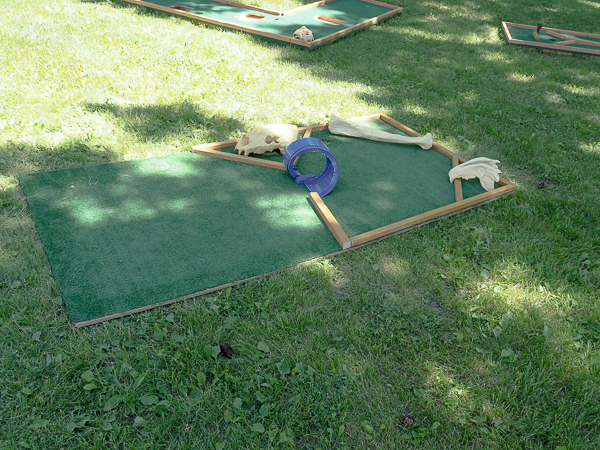
But first, a digression.
At the time we visited, the museum was hosting some kind of children's play day with inflatable bounce houses and other games. When I was a child, I loved putt-putt golf, but I have never seen a home-built course like this one, which featured, of course, bones here and there. A young man was the only staff with a collection of putters of various sizes. I assume it cost a certain amount of money to rent a ball and putter.
My father hoped for years to teach me to play "real" golf, but I never got past putting.
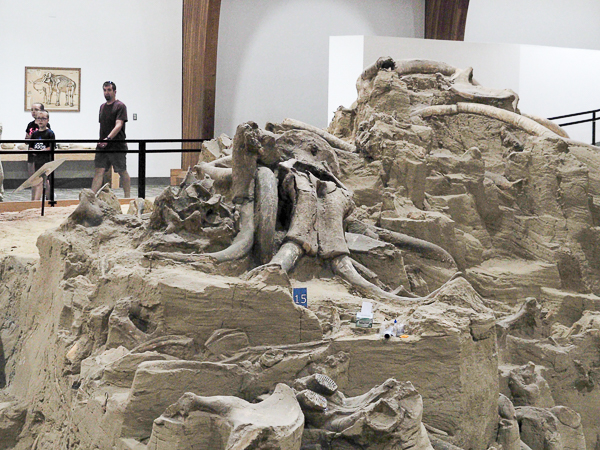
The entire excavation is covered by a huge climate-controlled building that protects it from the elements. Bones are strewn hither and yon in layers. A skull with preserved tusks crowns this heap. Walkways surround the working area and there are self-guided tours for rent. We had a local young woman guide who pointed out and explained the various sights. She was looking forward to the time when she would be old enough to help with the excavations.
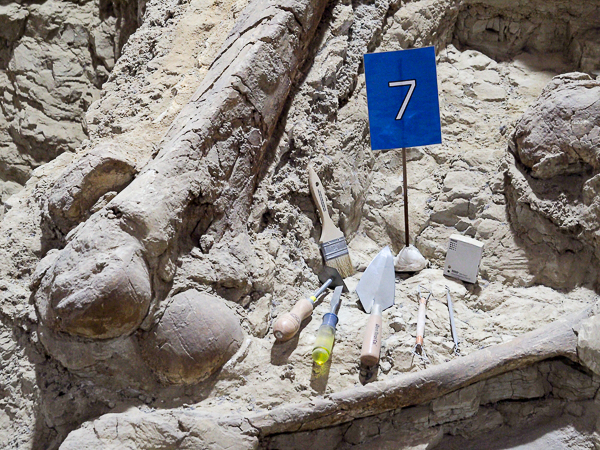
Due to the fragility of the bones, the excavation tools are delicate. No pickaxes here. Paintbrushes and dental picks are more suitable.
The tools give scale to the mammoth bones that surround them.
All of the mammoths recovered here are males. Maybe the females were smarter than to get caught in a sinkhole? (Did I really say that?)
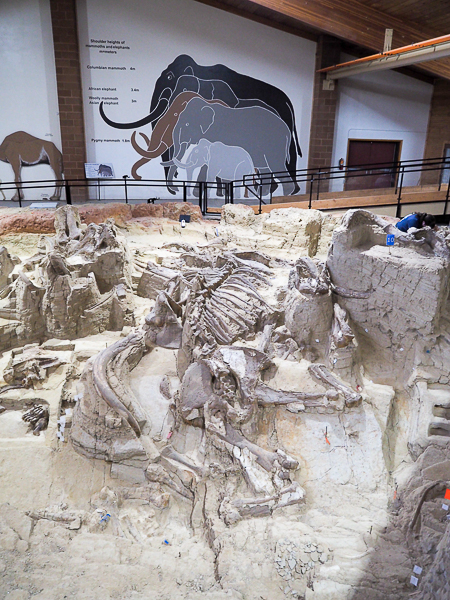
The display on the back wall gives some perspective. The largest animal is the Columbian Mammoth at 4 meters (13 feet). African Elephants come next then Wooly Mammoths at 3 meters (not quite 10 feet. The Indian Elephant is not much smaller. The smallest of the group is the Pygmy Mammoth at merely 6 feet.
There is currently a controversial project to "resurrect" the Wooly Mammoth using Asian Elephant cells and DNA recovered from frozen Wooly Mammoths. There was nothing about that here.
The skeleton in the foreground looks almost complete.
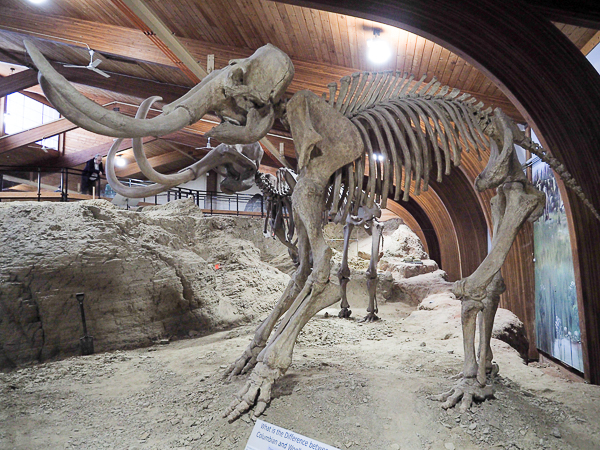
These two articulated skeletons illustrate the Wooly Mammoth (background) and the Columbian Mammoth (foreground). The Columbian Mammoth was larger with less-curved tusks.
Both of these species are found at the site.
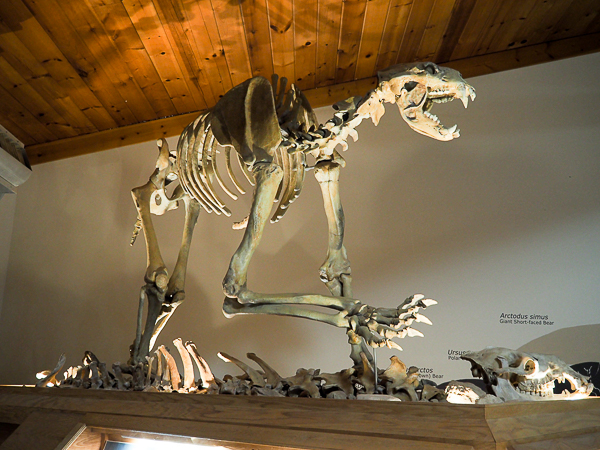
This giant short-faced bear was also found at the site. These were very fast (long legs!) carnivores with a tremendous bite.
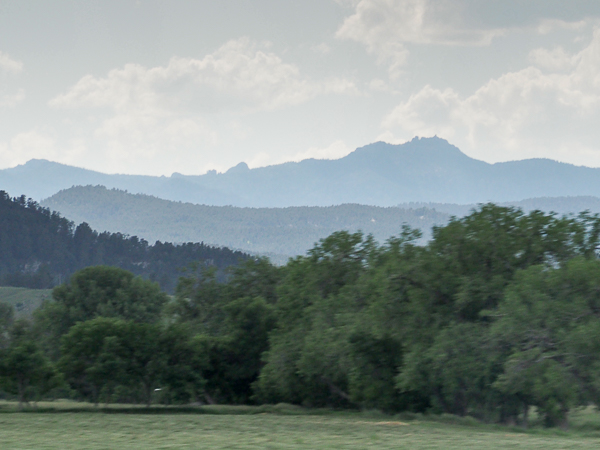
On our way back to Rapid City we passed Black Elk Peak, the highest spot in South Dakota -- in fact the highest spot between the Rocky Mountains and the Atlantic Ocean.
Road Scholar suggested several books to read before the trip. I had already read the Lewis & Clark journals and Teddy Roosevelt's narrative of his time in North Dakota, so I focused on Black Elk Speaks, which I found at the local university library. It was a fascinating read about a fascinating man living through tragic times for his people.
The name of the peak was changed from Harney Peak in 2016 at the request of the Lakota tribe in spite of opposition by the South Dakota state government. General Harney had led an expedition against the Lakota that killed mostly women and children.
Click your "back" button to return to the previous page or click for our picture album.